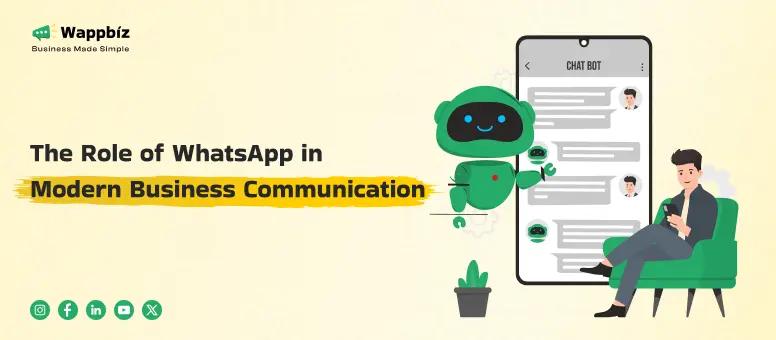In today’s fast-paced digital world, businesses are struggling to reach their audience effectively. Email newsletters often land in spam folders, social media posts get lost in cluttered feeds, and SMS campaigns feel outdated. Marketers are in constant search of an efficient, engaging, and cost-effective way to communicate with their audience.
This is where the WhatsApp Newsletter comes in as a game-changer. With over 2 billion users worldwide, WhatsApp has become an integral part of people’s daily communication. But did you know that you can leverage WhatsApp to send newsletters and keep your customers engaged? If you’re not using WhatsApp marketing yet, you might be missing out on a powerful customer engagement tool.
In this guide, we’ll walk you through everything you need to know about WhatsApp Newsletters, how to set them up, and why they are a must-have strategy in your marketing arsenal.
What is a WhatsApp Newsletter?
A WhatsApp Newsletter is a recurring message sent via WhatsApp Business API to a list of subscribers. Unlike email newsletters, WhatsApp newsletters land directly in a user’s chat, ensuring higher open rates and engagement.
With the right approach, you can use a WhatsApp chatbot to automate responses, schedule updates, and keep your audience engaged with minimal effort. The best part? WhatsApp newsletters feel more personal, which makes them highly effective for building customer relationships.
Why Choose WhatsApp for Sending Newsletters?
Before diving into the ‘how,’ let’s discuss the ‘why.’ What makes WhatsApp Newsletters the best option for businesses?
1. High Open Rates
Unlike emails that often remain unread, WhatsApp messages have an open rate of over 90%. This means your newsletters are more likely to be seen and read.
2. Real-Time Engagement
WhatsApp allows businesses to engage with customers instantly. Using a WhatsApp chatbot, you can even automate responses, providing quick answers to common queries.
3. Personalized Communication
With WhatsApp Business API, you can segment your audience and send tailored newsletters, ensuring higher engagement rates.
4. Cost-Effective
Compared to SMS marketing or paid social media campaigns, WhatsApp newsletters are a cost-effective way to stay connected with your audience.
5. Rich Media Support
You can send images, videos, voice messages, and even interactive buttons, making your WhatsApp marketing campaigns more engaging.
How to Send a WhatsApp Newsletter: Step-by-Step Guide
Now that you understand the power of WhatsApp Newsletters, let’s walk through the process of setting one up.
Step 1: Choose the Right WhatsApp Business Tool
To send newsletters, you need either:
WhatsApp Business App (For small businesses)
WhatsApp Business API (For medium and large enterprises)
For businesses with a large audience, the WhatsApp Business API is the best choice as it offers automation, bulk messaging, and chatbot integration.
Step 2: Build Your Subscriber List
A WhatsApp Newsletter is only effective if you have an engaged audience. Here’s how to grow your subscriber list:
Add a WhatsApp widget on your website.
Promote your WhatsApp newsletter on social media.
Use QR codes in physical stores or packaging.
Offer exclusive content or discounts for WhatsApp subscribers.
Step 3: Segment Your Audience
Not all customers are interested in the same updates. Use segmentation to create different groups based on interests, location, or purchase history. This helps in sending targeted messages that are more relevant and engaging.
Step 4: Create Engaging Newsletter Content
Your WhatsApp Newsletter should provide value. Here are some content ideas:
Product updates and launches
Exclusive discounts and offers
Educational content and tips
Company news and announcements
Make sure to keep messages short, engaging, and visually appealing by adding images, videos, or GIFs.
Step 5: Automate with WhatsApp Chatbot
A WhatsApp chatbot can help schedule newsletters, send automated responses, and personalize communication. This saves time while maintaining an interactive experience for subscribers.
Step 6: Send and Monitor Performance
After sending your WhatsApp Newsletter, track metrics like open rates, response rates, and conversions. With WhatsApp Business API, you can analyze the performance and optimize your campaigns.
Best Practices for Sending WhatsApp Newsletters
To maximize the impact of your WhatsApp marketing strategy, follow these best practices:
1. Keep it Short & Simple
WhatsApp is a messaging app, so keep your newsletters concise and engaging.
2. Use a Conversational Tone
Unlike email marketing, WhatsApp newsletters should feel personal and friendly.
3. Don’t Spam Your Subscribers
Limit your newsletters to 1-2 times per week to avoid overwhelming your audience.
4. Encourage Interaction
Ask questions, use polls, or add CTA buttons to encourage engagement.
5. Follow WhatsApp Guidelines
WhatsApp has strict policies for business messaging. Ensure compliance to avoid getting banned.
Future of WhatsApp Newsletters
The demand for WhatsApp marketing is growing rapidly. With the rise of AI-powered WhatsApp chatbots and advanced WhatsApp Business API features, businesses will have even more tools to enhance customer engagement.
If you’re not leveraging WhatsApp Newsletters yet, now is the perfect time to start. With the right strategy, you can build strong relationships, increase brand loyalty, and drive more sales—all through the world’s most popular messaging app.
Final Thoughts
The digital marketing landscape is evolving, and WhatsApp Newsletters are leading the way in customer engagement. With WhatsApp Business API and WhatsApp chatbots, businesses can automate, personalize, and scale their marketing efforts like never before.
So, why wait? Start your WhatsApp Newsletter today and transform the way you connect with your audience!



Write a comment ...